Advanced Search
Advanced Search
Separate each phrase with comma to search any of these words
2021-01-05
Data Update
2021-01-07
Checking if selected Database has any configured customized chart, please wait...
Customized charts, if applicable, have been designed specifically for the types of datasets in certain database. Compared to the basic charts below, it will have a larger volume of data, complex visualization, and additional features.
It may take longer to load, but it will be worth the wait. In the meantime, please check out the other basic charts below.
Customized charts, if applicable, have been designed specifically for the types of datasets in certain database. Compared to the basic charts below, it will have a larger volume of data, complex visualization, and additional features.
It may take longer to load, but it will be worth the wait. In the meantime, please check out the other basic charts below.
Advanced Search
Advanced Search
Separate each phrase with comma to search any of these words
Date Published
News Sentiment
Monthly
Daily

- Download CSV
Average Sentiment for
Average Sentiment for
Last 30 Days:
Last 30 Days:
No News Found








